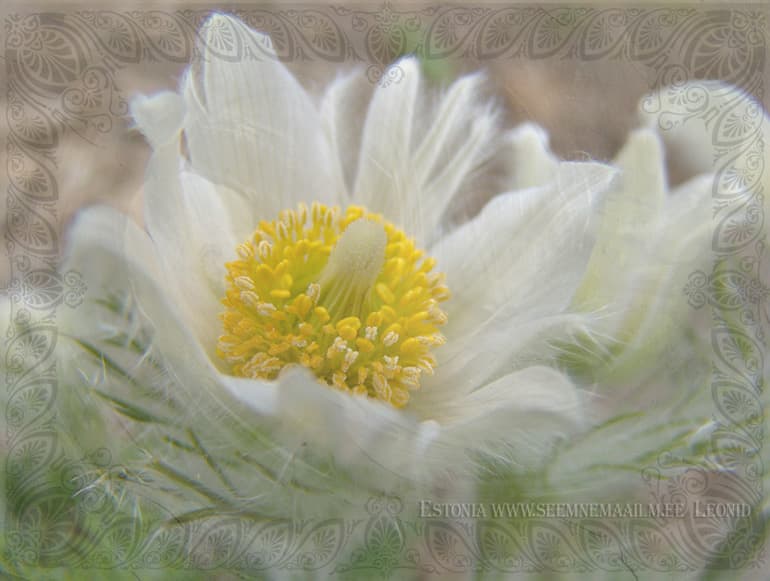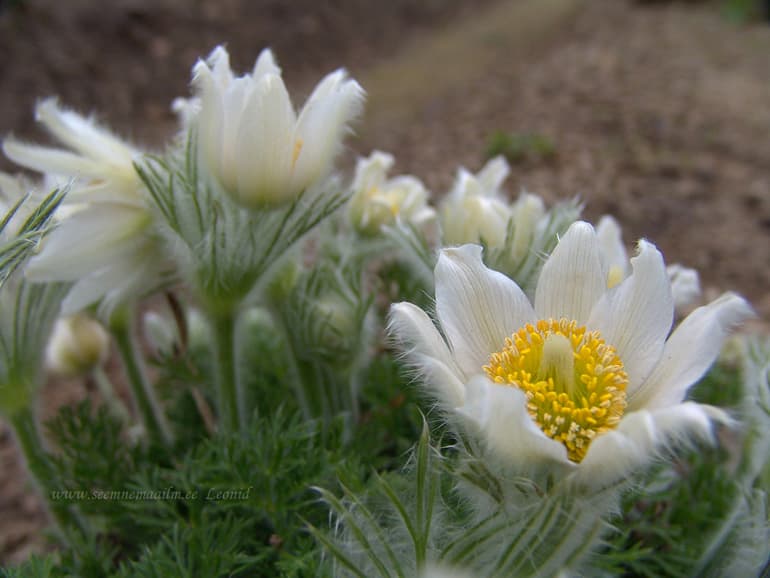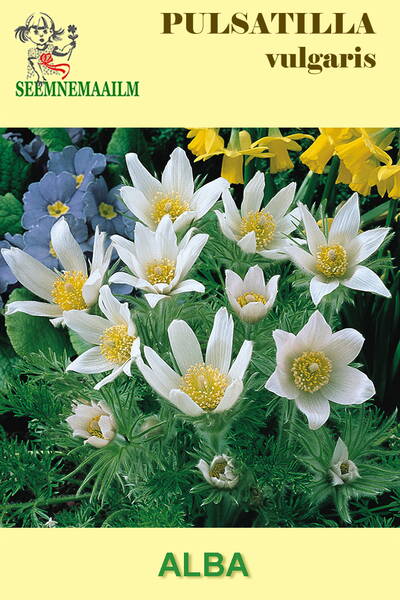Perennial of the Ranunculaceae family.
Special characteristics: large inflorescences, reliable flowering in early spring, drought resistance.
Height of flowering plant: 30 cm.
Foliage: fern-like, pinnately incised, green.
Flower color: white.
Natural flowering period: March - April.
Hardiness zones: Z5 - Z8.
1.0 g = 475 seeds.

Physical Characteristics: Perennial growing to 0.2m by 0.3m . It is hardy to zone 5 and is not frost tender. It is in flower from April to May, and the seeds ripen from June to July. The flowers are hermaphrodite (have both male and female organs) and are pollinated by Bees. The plant is self-fertile. We rate it 2 out of 5 for usefulness. The plant prefers: light (sandy) and medium (loamy) soils and requires well-drained soil. The plant prefers acid, neutral and basic (alkaline) soils and can grow in very alkaline soil. It cannot grow in the shade. It requires dry or moist soil and can tolerate drought. Habitats and Possible Locations Ground Cover. Cultivation details Requires a well-drained humus rich gritty soil in a sunny position. Lime tolerant. Prefers lime. Grows best in a well-drained chalky soil in a dry warm situation. Established plants are fairly drought tolerant. A very hardy plant, tolerating temperatures down to about -20°c. A very ornamental plant, there are many named varieties. The plant has become rare in its natural environment, due partly to over-collecting and partly to habitat loss. Large plants transplant badly. A greedy plant, inhibiting the growth of nearby plants, especially legumes. Propagation Seed - best sown as soon as it is ripe in early summer in a cold frame. The seed usually germinates in about 2 - 3 weeks. Sow stored seed in late winter in a cold frame. Germination takes about 1 - 6 months at 15°c. When they are large enough to handle, prick the seedlings out into individual pots and grow them on in the greenhouse for at least their first winter. Plant them out into their permanent positions in the spring. Root cuttings, 4cm long taken in early winter, potted up in a mixture of peat and sand. They can also be taken in July/August, planted vertically in pots in a greenhouse or frame. Some care is needed since the plant resents root disturbance.
Potting of anemone
Propagation of anemone

Anemone "White", European pasqueflower, pasque flower, pulsatilla. Bot. syn.: Anemone pulsatilla L.












